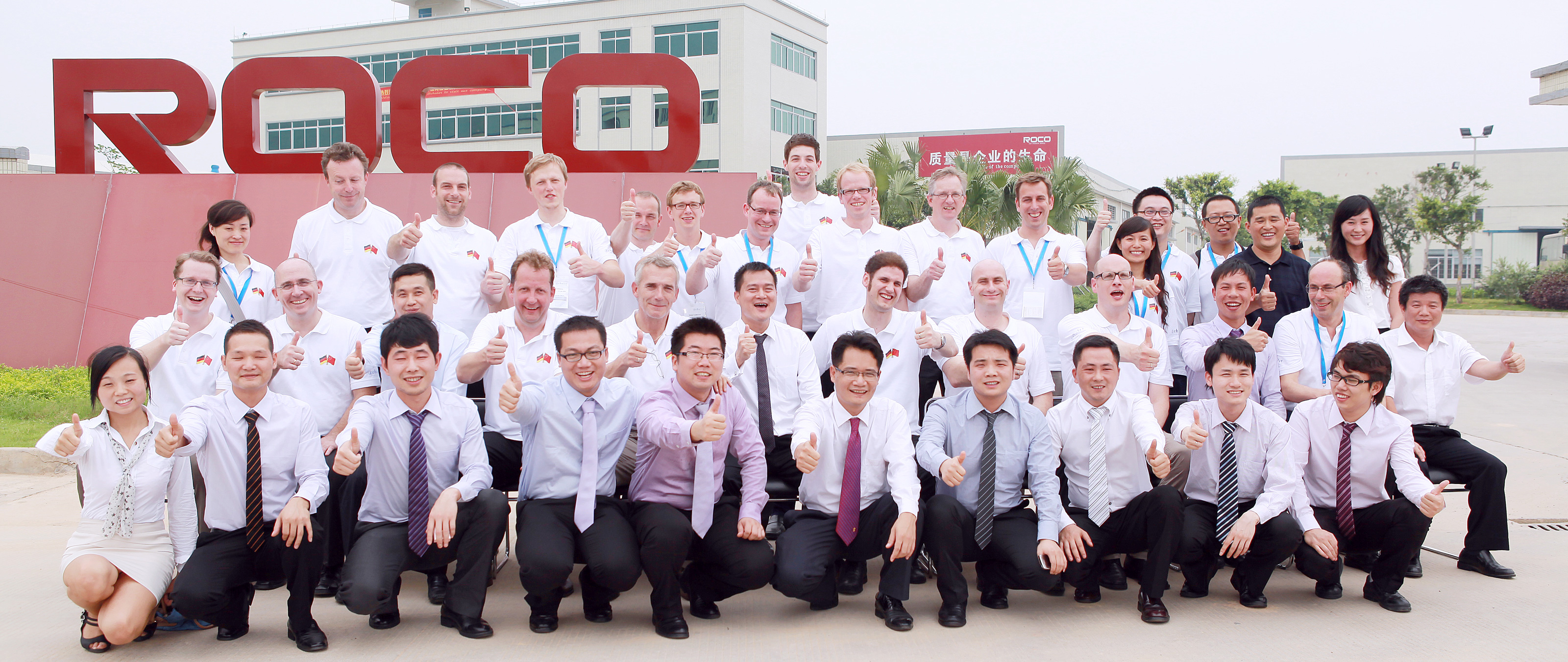
Production development
The furniture manufacturer Roco produces a wide range of wardrobes, wall units, wall shelves, tables and beds in melamine design for the Chinese market. Although Roco has a standard product catalog, each piece of furniture is custom-made to the customer's specifications. In addition, Roco offers 18 different melamine decors. The consequence for the production: an extremely high variance of parts and colors.
When investing in the new production plant in 2011, Roco opted for a machine park consisting almost entirely of machines from the HOMAG Group. This investment included four HOMAG HPP 180 panel sizing saws, two HOMAG KAL 210 edge banding machines, two Chinese edge banding machines (later replaced by two HOMAG KAL 310 edge banding machines), two HOMAG PTP 160 CNC processing machines (built by HOMAG Machinery Shanghai), one HOMAG BHX 050 CNC processing machine and five 3-head drills.
Against the background of this rather economical and simple machine technology, the central question arose: how can the company achieve maximum performance in order-related production, with the use of a standard machine fleet with limited options? So far, the company has been producing in two shifts - reaching a total of around 80 cabinets per day.
With this question in mind, the customer reached out to SCHULER Consulting. Together with the customer's project team, SCHULER developed a completely new organization process for Roco. The goal was to produce the same amount of parts or more in one shift. After a detailed analysis of the production conditions, the first step of completely closing the second shift was implemented.
In the next step, weekly orders were summarized and filtered according to specific criteria, including product (cabinet, bed and table) and color (decorative surface). This summary and criteria resulted in defined sequences for cutting procedures.
Due to the limited space (buffer) and no further gains of increasing batch sizes, it was decided that a maximum 20 orders of the same color could be combined for cutting optimizations. At a fixed weekly rhythm, the Roco team now works on the different colors (decorative surfaces) and their corresponding orders. Today, all saws start at the same time with the same colors, with 20 optimized jobs each. In addition, the saw operators place the parts, according to a defined pattern, in the commissioning carts. Cutting has the following effect: The material supply for the saws is accurate to the minute and waiting times for a possible change of decor on the saws no longer exists.
Similarly, edge banding eliminates downtime caused by edge changes. The entire weekly production of a decor comes in for edge banding. The defined provision of the parts in the commissioning carts enables seamless loading of the edge banding machines. The quality check of the work pieces is done in a dedicated area behind the drilling buffer.
Previously the drilling processes were the biggest bottleneck of Roco’s production processes. Here SCHULER initiated the idea to divide the work pieces according to the processing requirements (e.g. vertical or horizontal position of the holes). In addition, SCHULER had to find out which machine could do what process most efficiently.
Accordingly, part groups have been defined for the specific drilling machinery. Due to the increasing production volume, the existing drilling machines quickly reached the capacity limits and required an additional CNC drilling investment. With HOMAG’s machinery and Leuco drills, Roco was quickly convinced of the quality of German products. Quality issues like torn holes were now a thing of the past.
In order to achieve a higher level of quality, the two Chinese edge banding machines were replaced by the flexible HOMAG KAL 310 machines. This resulted in double the production output with the same energy costs.
Conclusion: Looking at the performance data before the analysis and the implementation of the new measures, Roco previously achieved 1,800 cycles in two edge banding shifts. Today Roco creates an output of 3,400 edge banding cycles in a single shift. This is almost four times the output, realized in less than three months.
"SCHULER's professionalism and dedicated workmanship impressed me a lot. Thanks to the support of SCHULER employee Klaus Kellner in 2012, we were able to achieve a multiple of our production output with the same amount of work. We are certain to continue this successful path in the future."
